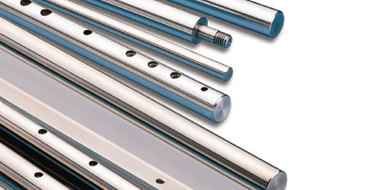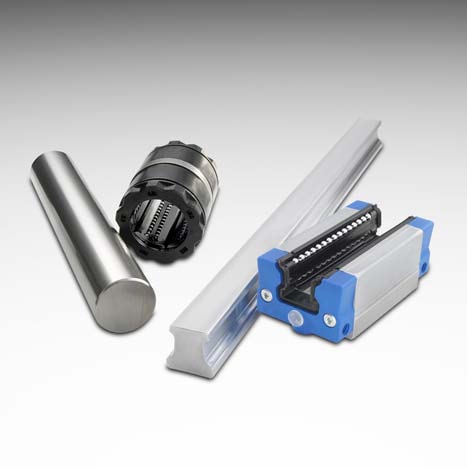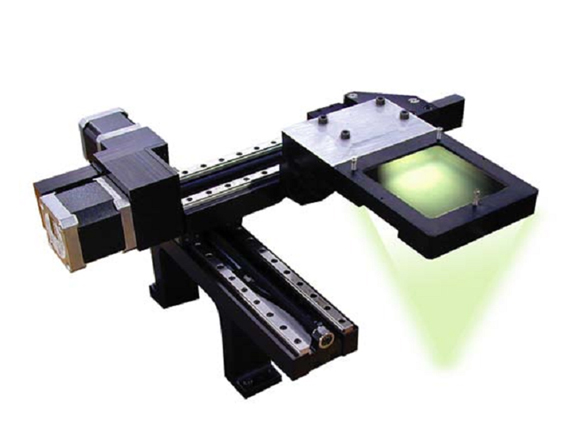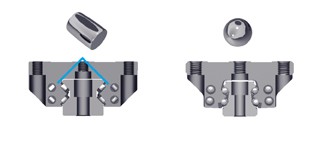Choose Your Login Account
Thomson currently has two account systems - one for the website and CAD model downloads, and one for e-commerce. We understand that two logins is an inconvenience and are working to consolidate our systems into one login process. Until we’re able to consolidate the two logins, please follow these guidelines:
- Download CAD models
- Save and retrieve projects in LinearMotioneering® and MicronMotioneering® tools
- Access Distributor Extranet and all related resources
- Order directly from Thomson online (North America only)
- Authorized Thomson Distributors can view and order from quotes online (Global)
- View the shopping cart and look up prior direct orders
Customer Service Chat (ONLINE) Customer Service Chat (OFFLINE)
Overview
What is Carbon Steel?
Commonly known as steel that is not stainless steel, carbon steel is the most used shafting material in industrial automation. It is easily hardenable, which lends itself to premium performance with all bearing types – especially those using ball bearings. A shaft’s high carbon content makes for easier machineability, but also puts it at risk for corrosion. To provide corrosion resistance, Thomson offers plating options (chrome, ARMOLOY™ and black oxide).
| Diameter Range |
Hardness | Options | Material | Length | Surface Finish | Straightness | Plating Options | |
|---|---|---|---|---|---|---|---|---|
| Carbon Steel Shafting | 3/16 - 4" (5 - 80mm) | 60 Rockwell C min | Solid Steel Predrilled (PD)
Predrilled Chrome Plated Plain Ends (PDCPPE) |
1566 Carbon Steel | Random up to 202" |
8 Ra microinch max | 0.001 in/ft |
Chrome
|
| Diameter Range |
Hardness | Options | Material | Length | Surface Finish | Straightness | Plating Options | |
|---|---|---|---|---|---|---|---|---|
| Carbon Steel Shafting | 3/16 - 4" (5 - 80mm) | 60 Rockwell C min | Solid Steel Predrilled (PD)
Predrilled Chrome Plated Plain Ends (PDCPPE) |
1566 Carbon Steel | Random up to 202" |
8 Ra microinch max | 0.001 in/ft |
Chrome
|
Coil-to-bar manufacturing technology permits sourcing of hot rolled material, resulting in lower costs, sourcing flexibility, high straightness levels and controlled sizing prior to induction hardening.
Thomson 60 Case shafting is stocked with radial holes drilled and tapped to accept a continuous shaft support rail in carbon steel or aluminum. Continuous support prevents shaft deflection when used to support heavy loads or for long travel lengths.
The Thomson Advantage
For more than 70 years, Thomson has been producing precision-ground linear shafting for its Linear Ball Bushing® Bearings.
- We are one of a few linear motion component suppliers producing their own shafting.
- We offer the largest selection of linear shafting – not just the popular sizes.
- We offer a complete linear motion solution – not just one component of a linear system.
- We offer the widest range of inch and metric shafting, support rails and support blocks in the market today.
- We continually optimize our processes to ensure optimal bearing performance and extended life.
- We perform thousands of hours of laboratory testing per year to continually evaluate our products.
While shafts may appear the same to the untrained eye on the surface, there are significant performance differences due to the manufacturer’s selected standards and the manufacturing processes used to achieve them. Thomson 60 Case was developed and is continually enhanced because of our goal to provide a consistent finish, roundness, straightness, cylindricity case hardness and depth on all shafting for the demands of a linear bearing. Unlike common shafting, Thomson 60 Case shafting is manufactured to the highest quality standards in an ISO 9000:2000 registered facility. Our techniques have been continuously upgraded with proprietary knowledge gained from more than 70 years of manufacturing experience. Using Thomson 60 Case with Thomson Ball Bushing Bearings ensures optimal bearing performance and travel life.
VIDEO: 60 Case® LinearRace® Shafting: Fully Stocked to Keep Your Design Projects on Track
Thomson 60 Case Linear Race shafting has been popular for decades for its consistent reliability and performance. To help customers get this high-quality, lab-tested product into their hands as quickly as possible for their time-sensitive design projects, Thomson goes to great lengths.

VIDEO: Shafting Selector Tool: Special Machining Online Demo
With the special machining add-on to the Thomson online shafting selector tool, the burden of creating 2D drawings is relieved, and the amount of time needed to specify the machined shaft is dramatically reduced.
Watch this comprehensive demo and see how this feature offers the most commonly used machining options, which are automatically converted to manufacturable 2D drawings for download as printable PDFs or sharable links.
Try the online shafting selector tool and special machining add-on at: https://www.thomsonlinear.com/en/products/shafting
For any cases in which your machining configurations don't fall within the scope of our tool's options, Thomson application engineers are always ready to provide fast help.

VIDEO: Shaft Selection Considerations for Your Next Linear Motion System
Maximize the performance and life of your linear motion systems by knowledgeably choosing the optimal shafting. All it takes is becoming familiar with a few key considerations.

VIDEO: Instant 3D Quote Tool – Immediate Pricing and Lead Times on 60 Case Shafting
Don't wait so long for a customized shafting quote. Simply upload your 3D model and get instant pricing and lead time on custom 60 Case LinearRace shafting.

VIDEO: Tech Tips: Mounting Options for Round Shafting
Properly mounting round shafting is required for it to be used as a linear guide. Watch this video to learn about the most common shaft mounting methods.

VIDEO: Round vs Square - Linear Guide Rail Basics
What is the difference between round rail and square rail? How do you know which one is more appropriate for a given application? How do you size them? Learn the basics of linear guide technology and how to size them for your next application. Plus - get a guided tour through the new online Linear Guide Component Tool.

VIDEO: Linear Bearings and Guides – Design Applications
In this webinar, you will learn: Linear Bearing Types, Typical Applications, Design Considerations, Application Requirements, Optional Features, and Design Calculations.

Technical Articles
-
Round or Square? Which is the Ideal Linear Guide for Your Application
Advancements in load capacity, life and ease of manufacture allowed an ever-widening range of applications to benefit from nearly friction free linear guidance. Since the introduction of the square, or profile rail, linear guide in the 1970s, the design engineer has been faced with the pivotal question: round or square?
Learn More -
Picking the Right Linear Rails for Your Application
How to choose between the main types of linear technologies, and how to design automation systems that deliver optimal performance using design requirements, rather than cost, as the primary consideration in selecting linear components.
Learn More -
Selecting and Applying Rolling Element Linear Bearings and Guides
Specifying the right bearing for a given application is necessary to save time and excessive costs. Understanding the tradeoffs of each bearing type is important to accurately size and select the right bearing for your application. This article will provide an overview of the major types of linear bearings and guides, explain how to specify them for specific applications and describe how to trouble-shoot common application problems.
Learn More
Brochures
| Miniature Components and Systems | 6862 KB | |
| Miniature Components and Systems | 6871 KB |
Catalogs
Certifications
To download the models below, you will need to sign in.
To provide better service to you on our websites, we and our service providers use cookies to collect your personal data when you browse. For information about our use of cookies and how to decline them or turn them off please read our cookie policy [available here].




